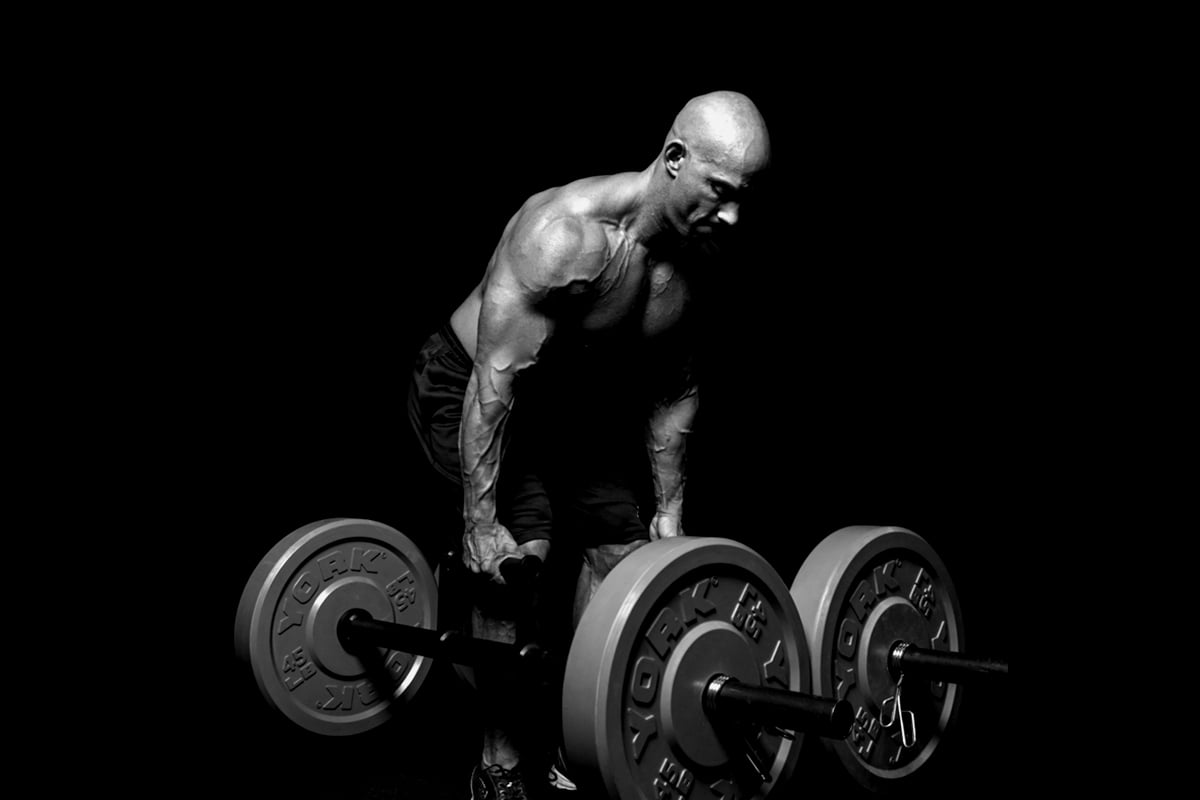Knowledge
Timed Carries For Traps, Arms And Core
Articles, Strength and performance

Timed Carries For Traps, Arms And Core
Here’s What You Need To Know…
1. Timed heavy carries will build your grip, arms, and core, and teach you to maintain a high level of force output for extended periods of time.
2. There are various versions of carries to try, including yoke carries, goblet carries, Dead-Squat carries, and overhead carries.
3. Haul a very heavyweight for as far as you can for 1 minute and then rest for 1 minute. Perform 3 minutes of total work – that’s all you need!
Heavy carries will build traps like mountains and hands of steel. Case in point, despite being able to do a 180-kilogram snatch-grip high pull with straps, I struggled to do 100 kilos without straps. After including carries in my training for a just a few weeks, I can now snatch-grip high pull 170 kilos without straps!
Carries will also improve your ability to maintain a high level of force output for extended periods of time. If jumps are the bridge between being strong and being fast, carries are the bridge between being strong and having great strength-capacity.
Oh, and heavy carries will also jack up your traps and arms like nothing else and make your core bulletproof. What’s not to love?
The Way It Works
I use carries to build strength-capacity along with slabs of muscle. To accomplish this, you need to use heavy loads for significant time under tension. I find 3 minutes in total works best.
Here’s your mission: pick up a big weight and carry it for as far as possible for 3 bouts of 1 minute each, with about a minute of rest between bouts.
To clarify:
1. Pick the weight up.
2. Walk the longest distance you can for 1 minute.
3. Rest for a minute.
4. Pick the weight back up and carry it for another minute.
5. Rest for another minute.
6. Then go all-out for one last 1-minute effort.
You can, if you must, take breaks during your carries but force yourself to pick it back up and continue. Obviously, you can rest the weight on the ground during the 1-minute break.
The 4 Types Of Carries
Dead-Squat Carry: This is the mother of all carries. Just load the Dead-Squat™ Bar, pick it up, and walk with it. I suggest using 40-50% of your max Dead-Squat weight for this exercise.
Yoke Carry: Put a barbell on your shoulders and walk. Simple but brutal for the traps. Power clean the barbell to get it to your shoulders, press it overhead, and then bring it back down to the shoulders. Use about 70-80% of your max power clean.
Overhead Carry: You’ll find no better exercise for building the shoulders, serratus, and obliques. Bring the barbell up to an overhead position – either by doing a power clean and push press or a power snatch – and walk. Use about 20-40% of your push press; any more and you won’t be able to drive your car afterwards.
Goblet Carry: This builds guns of steel. Grab a dumbbell and hold it as if you were going to do a goblet squat (palm of hands under the plates of the dumbbell, dumbbell held to the chest, just under the chin). Now walk, keeping the dumbbell close to your body. The best starting load is a guess, but a 50-pound dumbbell is a good starting point for most.
Get Carried Away
Pick one carry variation per workout and perform the aforementioned 3 sets of 1-minute work interspersed with 1-minute rest periods, trying to cover as much distance as possible in those 3 minutes of work. You’ll get in better shape and sport bigger arms and a stronger core to boot.
-CT